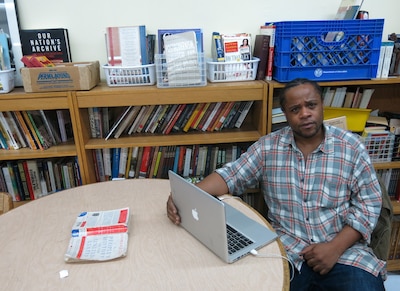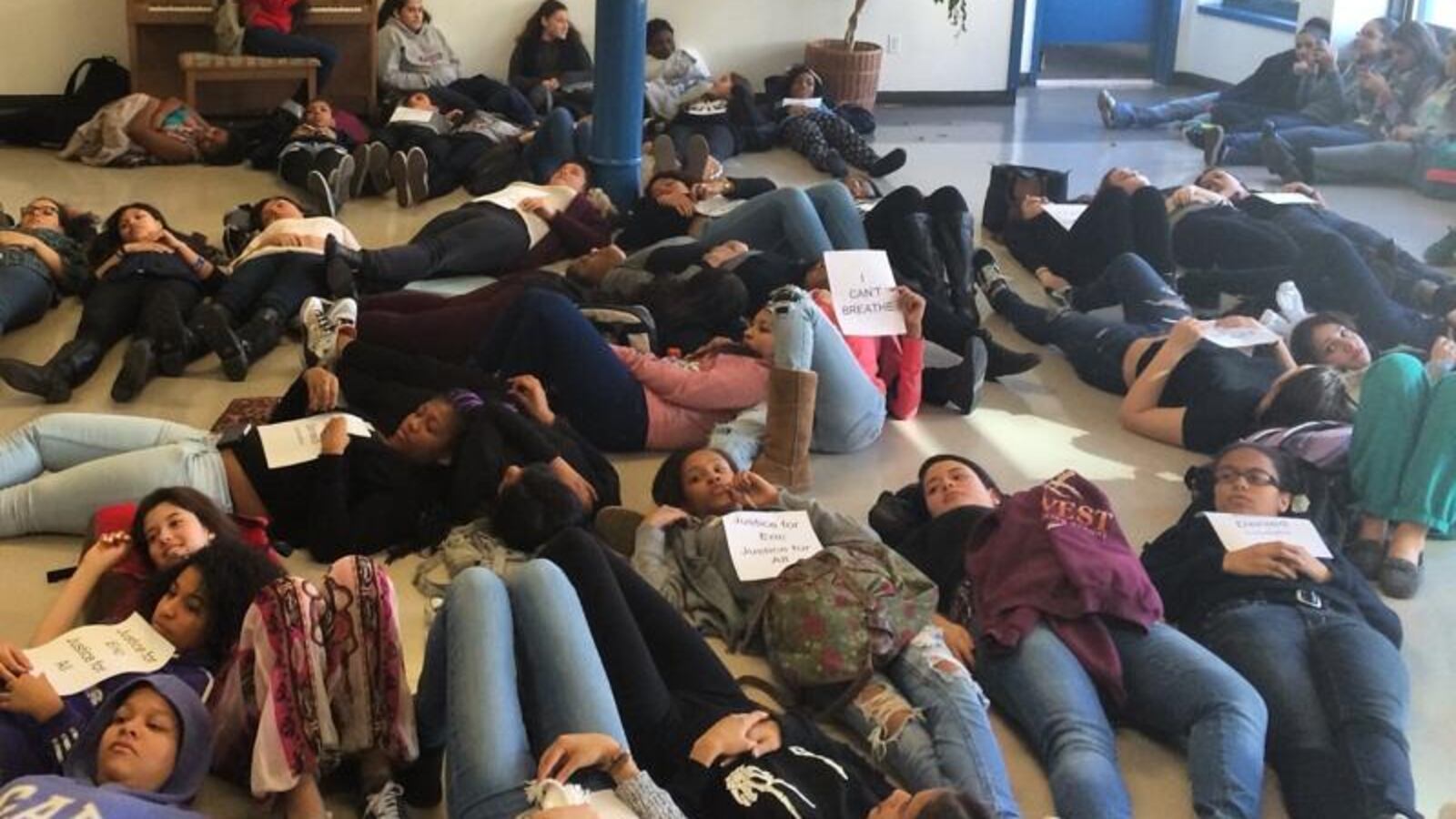History teacher Jeremy Copeland was getting ready for the day at School of the Future on Thursday morning when he peered out of his classroom and saw new signs decorating the hallways reading “#blacklivesmatter” and “Hands Up Don’t Shoot.”
Soon, students were lying on the hallway floor, a form of protest called a “die-in” that has spread in the wake of two separate grand jury decisions not to indict police officers for the deaths of unarmed black men, including Eric Garner, of Staten Island. Wednesday’s news that Garner’s death, caused by an officer’s chokehold, would not be ruled a crime touched off a new round of protests citywide and had school leaders preparing for a day of uncertainty and discussion.
At School of the Future, the student-led protests were welcomed, Copeland said.
“To see this group of white kids chant ‘black lives matter’ was probably one of the most powerful moments in my 16-year career,” said Copeland, who is black.

School of the Future, a middle and high school with roughly the same number of black and Hispanic students as white students, was not the only school that became a site of activism. A group of 60 people, including some teachers, assembled in a lobby at Harvest Collegiate High School during fifth period for their own “die-in.” Teachers at Dewitt Clinton High School and East Side Community School also tackled the issue, according to SchoolBook.
School officials anticipated that the decision could lead to disruptions. Earlier this week, hundreds of high school students left in the middle of the day to attend a protest in Union Square Park.
On Wednesday, Chancellor Carmen Fariña suggested to principals that they host assemblies and prepare guidance counselors to talk to distressed students, while teachers union President Michael Mulgrew advised that teachers and staff be ready respond to “legitimate questions and strong emotions” about the events.
As school let out on Wednesday afternoon, Harvest Collegiate students were warned to stay away from nearby Union Square, where a large protest was being planned. Later that night, news footage from a die-in at Grand Central Station gave a trio of juniors the idea to organize something similar in their school the next day.
“I feel like a problem in our society is that people are really apathetic about things and I just really wanted to get people my age and my peers to get more involved,” student organizer Shania Santana said.
For Copeland, Thursday was rife with opportunities to make civics relevant. He devoted his U.S. History and Government classes to the Garner case and later took some his students to Union Square.
No protests were going on while they were there, but the field trip was enough to unnerve his school’s principal, who received a call from her superintendent raising safety concerns, Copeland said.
“The point was to see democracy in action, to bring to life some of texts the kids are reading in class,” Copeland said.


